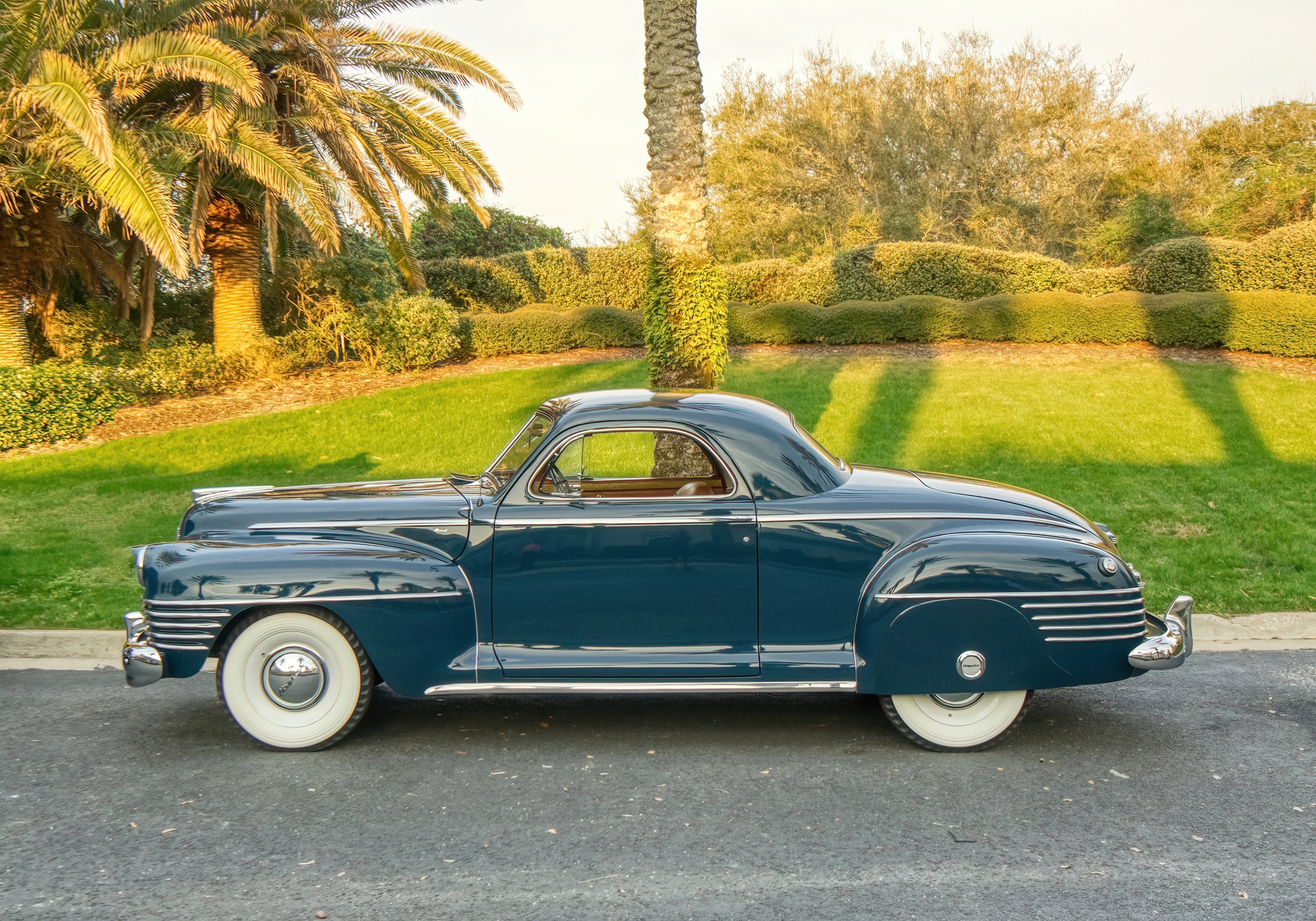
The 1942 Chrysler Fluid Drive is a notable vehicle in automotive history, particularly for its innovative semi-automatic transmission system, which was a significant advancement at the time. Chrysler's Fluid Drive was introduced in the late 1930s and became widely used across their lineup in the early 1940s, including in 1942 before American automakers shifted focus to wartime production.
Here’s an overview of the 1942 Chrysler Fluid Drive:
Background
- Manufacturer: Chrysler Corporation
- Year: 1942
- Technology: Fluid Drive
Specifications
- Engine: The 1942 Chrysler models equipped with Fluid Drive typically featured inline-six or straight-eight engines, depending on the model. The most common engine was a 241.5 cubic inch (3.9-liter) inline-six, producing around 120 horsepower. The straight-eight engines offered more power, usually around 130-135 horsepower, depending on the displacement.
- Transmission: The Fluid Drive system was paired with a three-speed manual transmission, but with a twist. The system allowed for smoother operation, eliminating the need for frequent clutch use, which was revolutionary for the time.
Fluid Drive System
- Overview: Fluid Drive was not a fully automatic transmission but a semi-automatic system that used a fluid coupling (similar to a torque converter) instead of a traditional mechanical clutch. This coupling allowed the car to idle in gear without stalling, making driving easier and more comfortable, especially in stop-and-go traffic.
- Operation: The driver could shift gears manually, but the fluid coupling allowed for smoother transitions. Unlike a conventional manual transmission, the driver did not need to use the clutch to start or stop the vehicle when it was in gear. This innovation was particularly appealing to drivers who were looking for an easier driving experience compared to the traditional manual transmissions of the time.
- Benefits: The Fluid Drive system offered several advantages:
- Smoother Operation: Reduced the jolt and strain on the drivetrain during gear changes.
- Ease of Use: Made driving more accessible to a broader audience, including those who found manual transmissions challenging.
- Durability: The fluid coupling reduced wear and tear on the transmission and clutch components, increasing the longevity of the drivetrain.
Design and Features
- Body Styles: The 1942 Chrysler models with Fluid Drive were available in various body styles, including sedans, coupes, and convertibles. The designs reflected the pre-war American automotive styling with sleek lines, rounded fenders, and a robust, solid appearance.
- Interior: Interiors were spacious and featured high-quality materials, with options for cloth or leather upholstery. The dashboard was designed with simplicity and functionality in mind, featuring clear, easy-to-read gauges and controls.
- Comfort and Convenience: The 1942 Chrysler models emphasized comfort and convenience, with features such as wide, cushioned seats, ample legroom, and advanced (for the time) heating and ventilation systems.
Performance
- Driving Experience: The Fluid Drive system provided a unique driving experience, combining the control of a manual transmission with the ease of an automatic. While acceleration was not as brisk as modern vehicles, it was adequate for the era, and the smoothness of the power delivery was a significant selling point.
- Handling: Like most cars of the period, the 1942 Chrysler models offered a comfortable, stable ride. The suspension was designed to handle the rougher roads of the time, with coil springs in the front and leaf springs in the rear, providing a balanced ride quality.
Historical Significance
- Innovation: The Fluid Drive system was one of the early steps towards fully automatic transmissions, which would become commonplace in the following decades. It represented Chrysler’s commitment to innovation and making driving more accessible to the general public.
- Pre-War Production: The 1942 Chrysler Fluid Drive models are particularly significant as they were among the last civilian vehicles produced before the U.S. entry into World War II halted automobile production for the war effort.
- Cultural Impact: At a time when manual transmissions dominated the market, Chrysler's Fluid Drive system offered a glimpse into the future of automotive transmissions, influencing the development of automatic transmissions in the post-war era.
Taken at the Amelia Island Concours
You may purchase a print of the 1942 Chrysler Fluid Drive in our dElegance 2023 online gallery.
The Vintage Automobile Article Index




